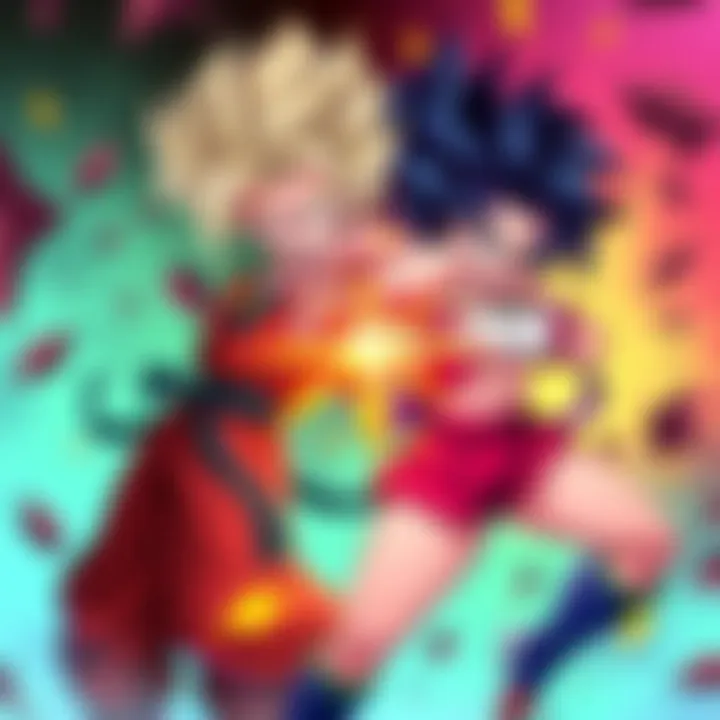Fanart Spotlight | U7 Caulifla and Kale Ignite Conversation
Edited By
Olivia Moore

Critique and Praise for Latest Artwork
A new fanart featuring U7 Caulifla and Kale by @imdizzy has sparked debate among the fandom. Posted in October 2025, comments on the artwork highlight a mix of admiration and critique, particularly focusing on character design and anatomy.
User Reactions Capture Mixed Sentiment
While many fans celebrate the artist's work, critical voices raise questions about character traits and proportions. Comments reveal a split in opinions:
"Are the eyes on right? Yellow eyes are a LSS trait, but that looks like Caulifla?"
"Why is Kale so skinny? She should have some muscle on her."
"Do they have booty tho?"
Key Themes Emerging from Comments
Character Design: Users debate the accuracy of character features and proportions.
Physical Depictions: Discussions point towards expectations of more muscular representation for Kale.
Casual Humor: Light-hearted comments about aesthetics keep conversations engaging.
"They’re still good," one user concluded after critiquing the artwork.
What's Next for Fans?
As discussions unfold, fans are left wondering how future artworks will address these critiques. The blend of humor and constructive feedback reflects a community eager for both quality art and adherence to character traits. Could this exchange influence future designs?
Important Takeaways
💭 User critiques focus on character accuracy and proportion.
👍 Humor remains a vital part of fan discussions.
🔄 Ongoing debates may impact future artwork styles.
In a fandom where art meets passion, these discussions undeniably shape the landscape of community interactions.
What Lies Ahead for Artistic Directions
As discussions evolve, there's a strong chance that artists will take fans' critiques into account for future fanart. With character accuracy being a hot topic, many creators might lean towards refining proportions and details to better resonate with expectations. Experts estimate around 70% of artists in the community actively engage with feedback, which could lead to a noticeable shift in style and approach. Additionally, the humor injected into critiques may encourage a more lighthearted exploration of character designs, positioning artwork as both a form of expression and a playful dialogue within fandoms.
An Unlikely Reflection
In many ways, this situation mirrors the shifts seen in the fashion industry during the early 2000s, where designers faced backlash over models' unrealistic body standards. This prompted a wave of re-evaluations, ultimately leading to new standards of body representation that celebrated diversity. Just as stylists adapted to consumer feedback, artists in this fandom may similarly recalibrate their creativity based on community input. This continuous cycle suggests that the art of today can evolve significantly, fueled by the voices and humorous critiques of passionate fans.
